The second “Paluma After Dark” night walk is scheduled for this Saturday at 7pm, starting at Potters Park (27 Lennox Cr).
In the weeks since the inaugural walk in March, there have been a number of unofficial night walks around the village that has uncovered some additional features that can be easily seen along Lennox Cr or the H-track. The most spectacular is the discovery of brilliant green fluorescent liverworts along the H-track. These small moss-like plants are not normally visible in the dark, but suddenly glow electric blue when illuminated with UV light. On the H-track, these liverworts can cover entire logs, mostly as an understory plant beneath and between moss and other non-fluorescing liverworts. Andi Cairns, who is a local expert on liverworts organized a dedicated collecting trip with me and Will Cairns as collectors (the most conspicuously fluorescing logs were just out of wheelchair access range for Andi.) Andi has identified the species as Bazzania vittata.
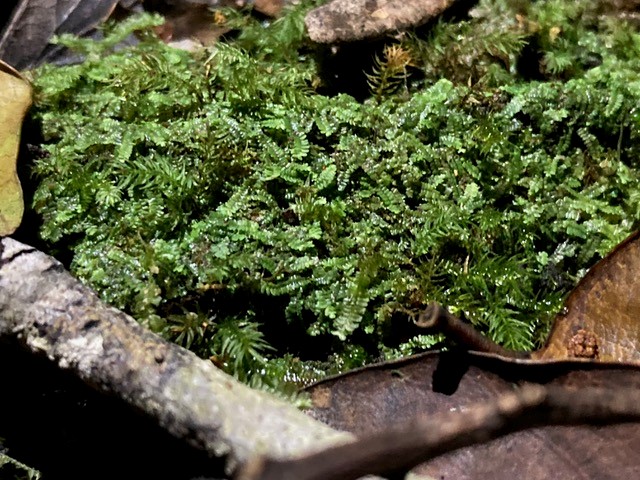
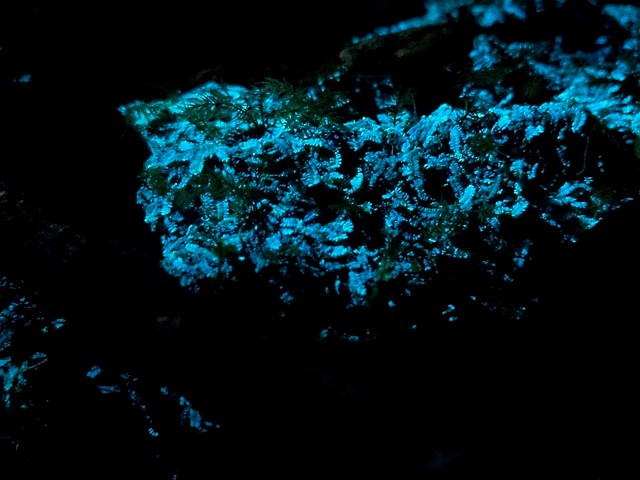
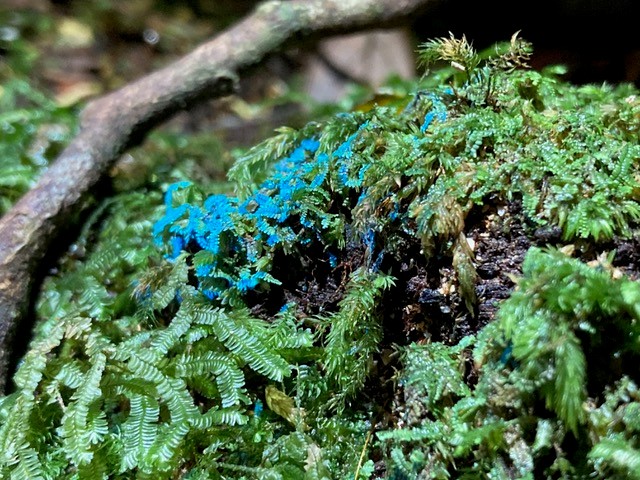
A rotten log on the H-track. Top left: Illuminated by normal torchlight. Top Right: Illuminated with a UV torch. Bottom: Using both torches to show how the fluorescent species is a relatively inconspicuous component of the surface of the log, which is dominated by a moss and a larger liverwort, Photos by Will Cairns.
After consulting her network of experts from other states and countries it appears that this phenomenon is a recently discovered property of just a few species. And her posts and pictures have motivated other bryologists to go out with UV torches to see what they can find! There is active speculation (but no firm conclusions) on what adaptive advantage this fluorescence confers on the liverwort. It is possible that it provides some protection against UV damage as the fluorescence serves to absorb potentially harmful UV and re-emit it as safe visible light, but there may be other possible explanations.

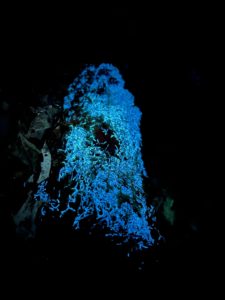
I have been out on 4 occasions over the last month and have seen these glowing liverworts each time, so I am pretty sure they will be visible during our next Paluma After Dark walk this Saturday.
The other discovery (at least for me personally) is that there is a small colony of glow worms living on a low vertical earth cutting just before the first left-hand bend in the crescent (starting from Potters Park). Several residents have mentioned to me that they have seen glow worms in the past around Paluma, but it’s great to find some right along the road near my house. unlike the fluorescent liverworts, glow worms are bioluminescent and emit light during the nighttime to attract small insects that they feed on. Glow worms are actually the larval phase of a small fly (several species of fungus gnat) belonging to 3 genera. In Australia & NZ there are nine species belonging to the genus Arachnocampa. Here in Queensland the predominant and endemic species is Arachnocampa tropica, which can be found throughout the wet tropics. The larvae of all glow worms produce a series of horizontal and vertical threads with viscous droplets that act as a fly trap for small insects. The larvae live and grow for about 6-11 months while the adult is very short-lived.
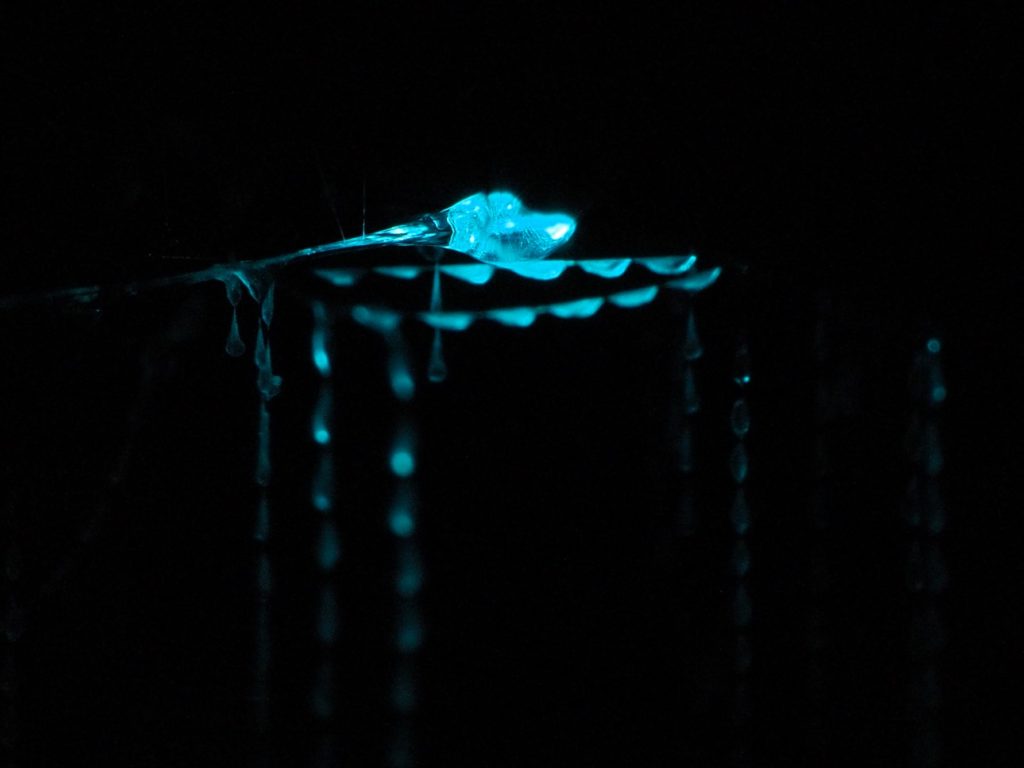

I will certainly ensure that we check these out as well during our next night walk.
Text by Jamie Oliver, photos as indicated
The next Paluma After Dark walk will be at 7 pm, Saturday, April 23, at Potters Park (27 Lennox Cr). Bring a head torch and a UV torch if you have one. I will have several UV torches to share.

Green chlorophyll is known to fluoresce red…why does this plant fluoresce blue? Good question!
Secondary metabolites – biochemical compounds not directly involved in the metabolism of the plant, e.g., phenols and flavonoids – may play a major role in the interaction of plants with their environment; for example, by protecting cells from the harmful effects of the sun, or by making leaves unpalatable to herbivores. Some plant phenols are reported to fluoresce blue, others yellow or orange. David Glenny, a bryologist working in New Zealand, found that Bazzania tayloriana, a close relative of Bazzania vittata, fluoresced blue in its cell walls, suggesting that phenolic compounds are in the structure of the leaves, rather than within the cell contents (cytoplasm). Dry specimens of these Bazzania species in herbaria still fluoresce blue when exposed to UV light!
I would love to know if anyone finds other fluorescing bryophytes. Don’t stumble in the dark –the blue fluorescence is easily visible in shaded rainforest.
A fascinating article, Jamie. I’m looking forward to reading about more discoveries. Wish I could join you on the walk.
Just fascinating finds Jamie. I am very much looking forward to joining the next walk to see these amazing discoveries for myself!